In this blog, we delve into the profound significance of the 12 Adityas, revered figures in Bharatiya history and spirituality. Their influence spans ancient scriptures, astronomical knowledge, and even modern practices like yoga, showcasing a rich tapestry of cultural heritage that connects time, celestial bodies, and human existence.
Table of Contents
- Why is Sunday a Holiday?
- The Twelve Months: A Historical Perspective
- Understanding Jyotisha Shastra
- Celestial Bodies and Time Calculation
- The Reverence of the Sun: Dvadasa Aditya
- The First Aditya: Dhada
- The Second Aditya: Aryama
- The Third Aditya: Mitra
- The Fourth Aditya: Varuna
- The Fifth Aditya: Indra
- The Sixth Aditya: Vivasvan
- The Seventh Aditya: Trashta
- The Eighth Aditya: Vishnu
- The Ninth Aditya: Amshuman
- The Tenth Aditya: Bhaga
- The Eleventh Aditya: Pusha
- The Twelfth Aditya: Pajanya
- Scriptural References to Dwadasa Aditya
- Scientific Texts: Surya Siddhantam
- Physical Manifestations of Dwadasa Aditya
- Physiological Aspects: Surya Namaskaram
- The Spiritual Practice of Sandhya Vandana
- Legacy of Aditya in Modern India
- The Truth of Satyameva Jayate
- Conclusion: The Enduring Significance of Dwadasa Aditya
- Frequently Asked Questions
Why is Sunday a Holiday?
Sunday is not just a day of rest; it carries historical and religious significance. The concept of a weekly day off originates from ancient Jewish tradition, where one of the Ten Commandments instructs followers to keep a holy day. This day, known as Sabaat, is reserved for rest and prayer.
This practice was later embraced by Christianity and Islam, embedding the idea of a weekly break into multiple religious frameworks. As colonial powers expanded globally, they introduced this concept of a weekend to various cultures, even those not aligned with Abrahamic traditions. Thus, Sunday became a universal day of respite, appreciated by many.
The Twelve Months: A Historical Perspective
The division of the year into twelve months is a practice rooted in numerous ancient calendars across civilizations. However, the Hindu calendar, which is often referred to as the Bharatiya calendar, stands out in its historical context.
According to Bharatiya Jyotisha Shastra, the twelve-month structure has been meticulously crafted, reflecting both astronomical observations and cultural practices. This ancient system is not merely an arbitrary division; it holds profound significance in understanding our connection to time and the cosmos.

Understanding Jyotisha Shastra
Jyotisha Shastra, often misunderstood as mere fortune-telling, is a crucial aspect of Vedic knowledge. It is revered as the ‘eyes’ of the Vedic tradition, emphasizing its importance in understanding cosmic phenomena and time calculations.
This ancient science involves complex calculations based on the positions of celestial bodies. It is not trivialized by simplistic interpretations; instead, it requires a deep understanding of mathematics and astronomy, showcasing the sophistication of ancient Bharatiya scholars.
Celestial Bodies and Time Calculation
Time calculation in Jyotisha Shastra is a nuanced process that involves observing celestial bodies. The Earth, surrounded by twelve prominent constellations, serves as a reference point for understanding time.
As the Sun traverses through these constellations, it creates a cycle of approximately thirty days for each month. This cyclical movement is mirrored by the Moon and other celestial bodies, forming a comprehensive system of timekeeping that is both intricate and spiritually significant.
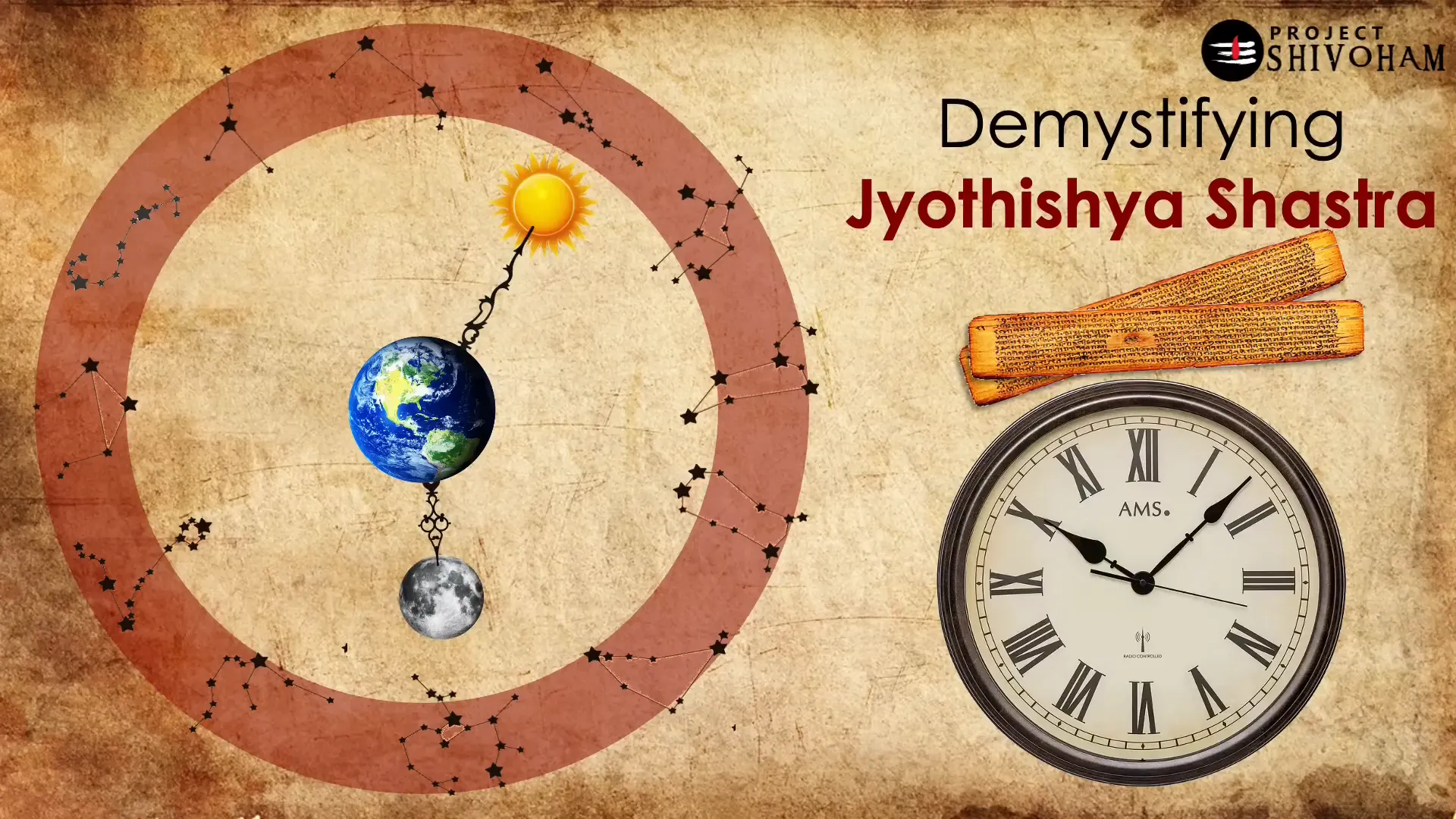
The Reverence of the Sun: Dvadasa Aditya
The Sun holds a sacred place in Bharatiya culture, represented as Dvadasa Aditya, or the twelve manifestations of the Sun. Each position of the Sun corresponds to a specific constellation, revered for its unique qualities and significance.
These twelve forms of Aditya are deeply woven into the fabric of Bharatiya spirituality, influencing rituals, festivals, and daily practices. The reverence for the Sun is not merely a cultural artifact; it is a living tradition that shapes the lives of millions.
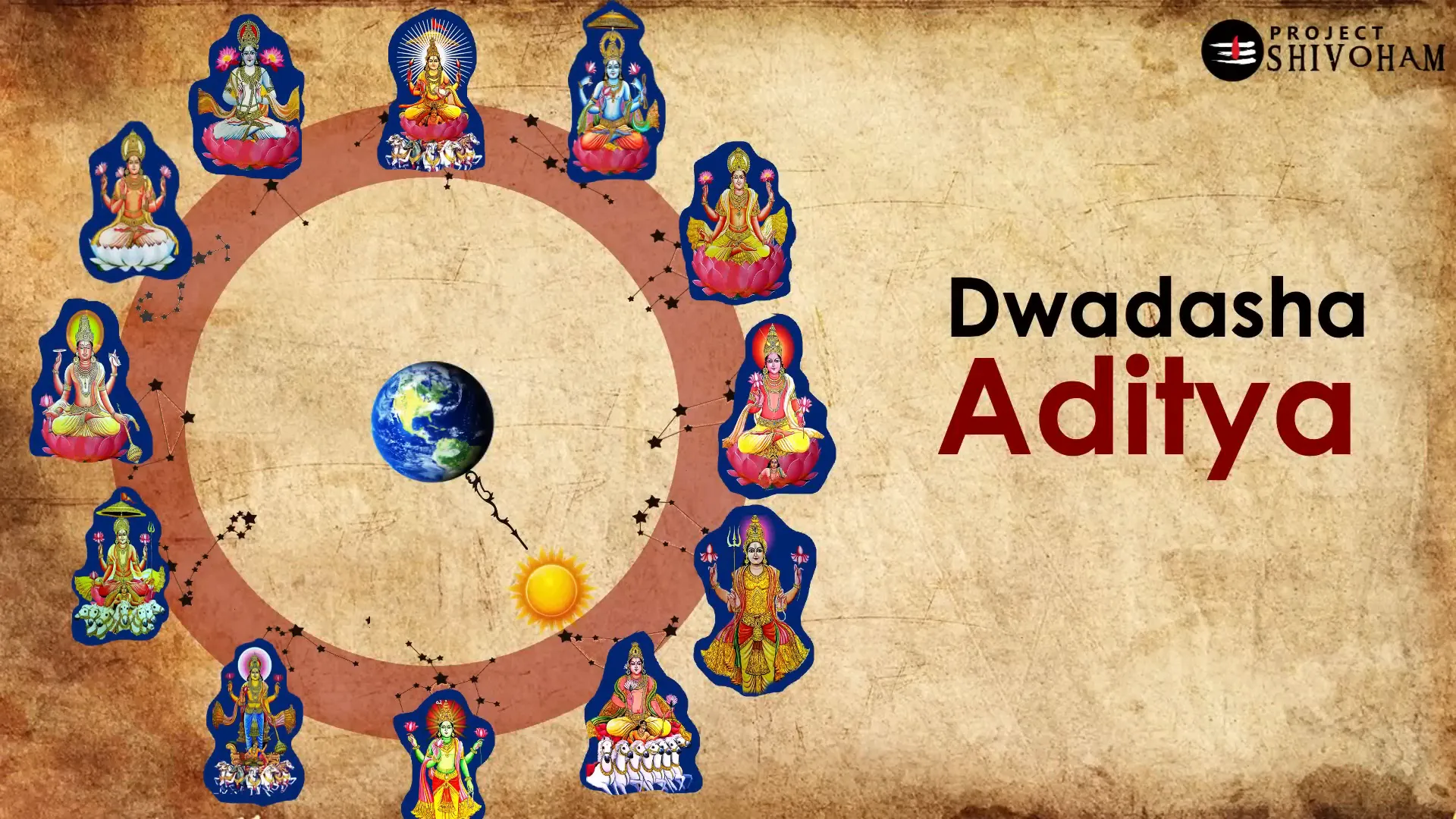
The First Aditya: Dhada
Dhada is the first of the twelve Adityas, associated with the constellation Aries. This period, spanning March to April, signifies new beginnings and the awakening of life after winter.
The imagery and symbolism associated with Dhada reflect strength and vitality, embodying the essence of spring and renewal. This is a time when nature flourishes, and the devotion towards Dhada is manifested in various cultural practices.
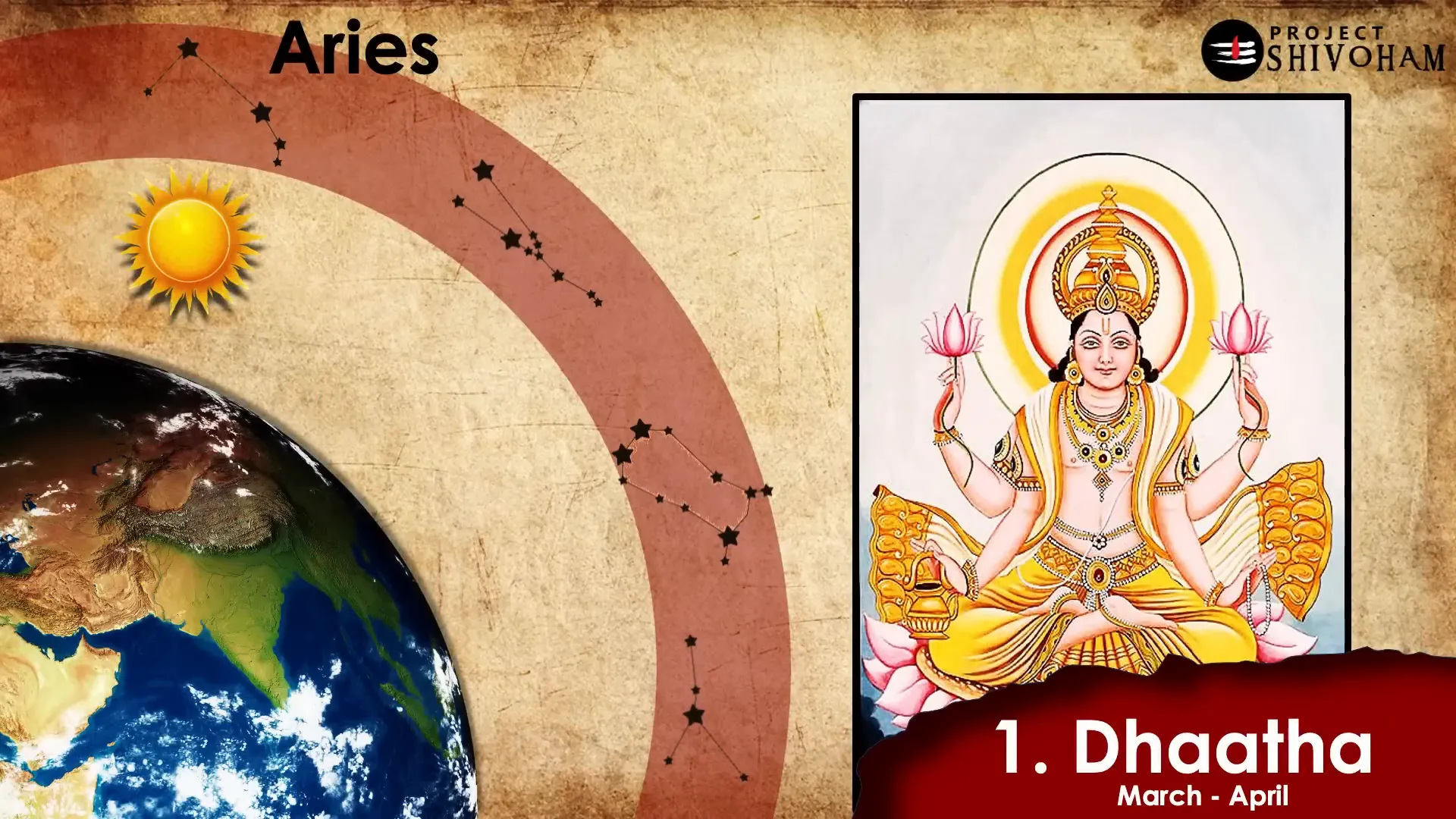
The Second Aditya: Aryama
Aryama, the second Aditya, is revered when the Sun is in the constellation Taurus, from April to May. This phase represents stability and abundance, reflecting the earth’s fertility during this time.
Devotees honor Aryama for his nurturing qualities, as this period is crucial for agriculture and sustenance. The connection between Aryama and the natural world emphasizes the importance of balance and harmony in life.
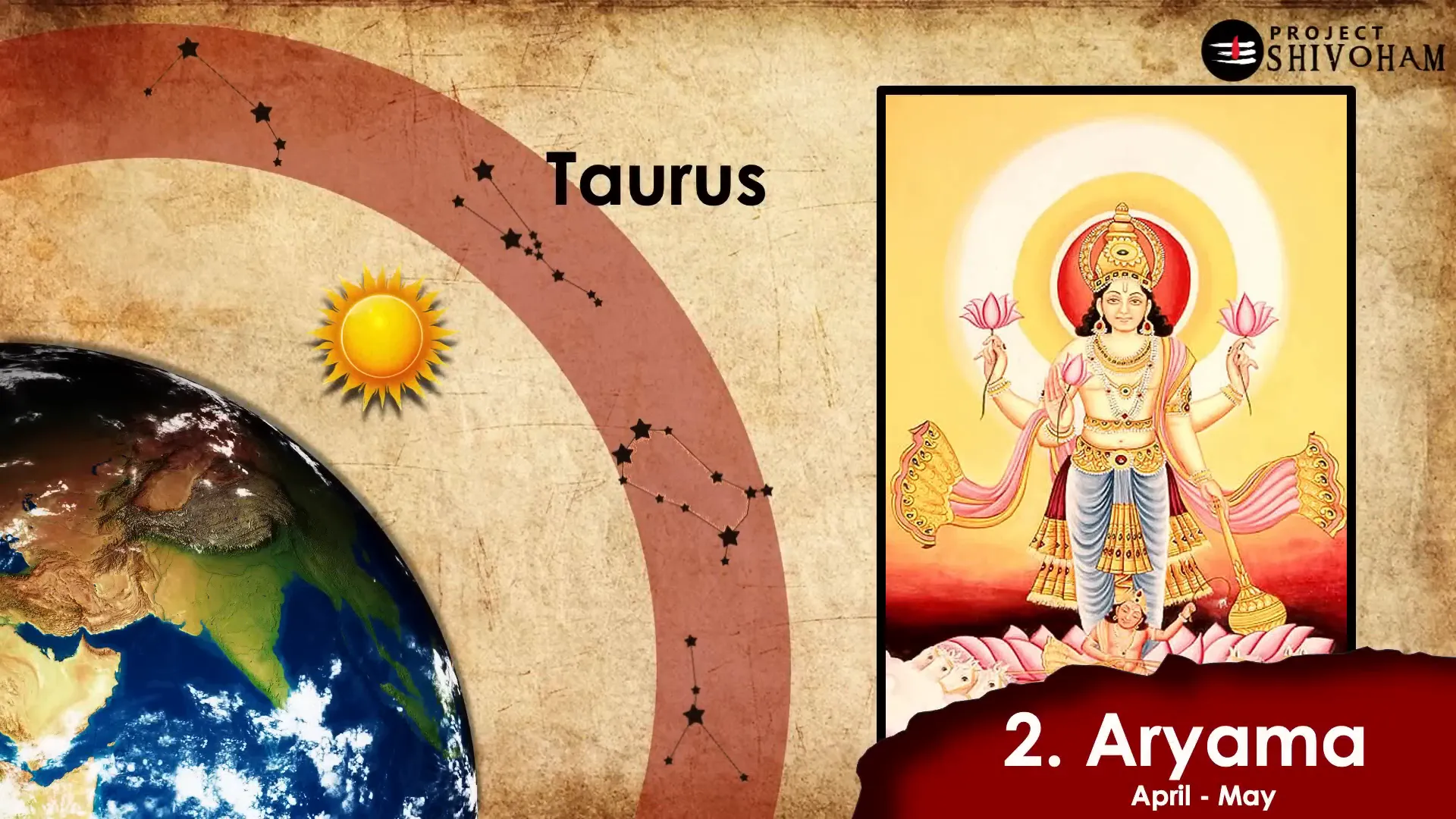
The Third Aditya: Mitra
Mitra, the third Aditya, shines during the constellation Gemini between May and June. This form represents friendship, harmony, and the interconnectedness of all beings.
Worshipping Mitra fosters a sense of community and shared purpose, aligning with the essence of human relationships. The qualities of Mitra remind us of the importance of unity and cooperation in our daily lives.
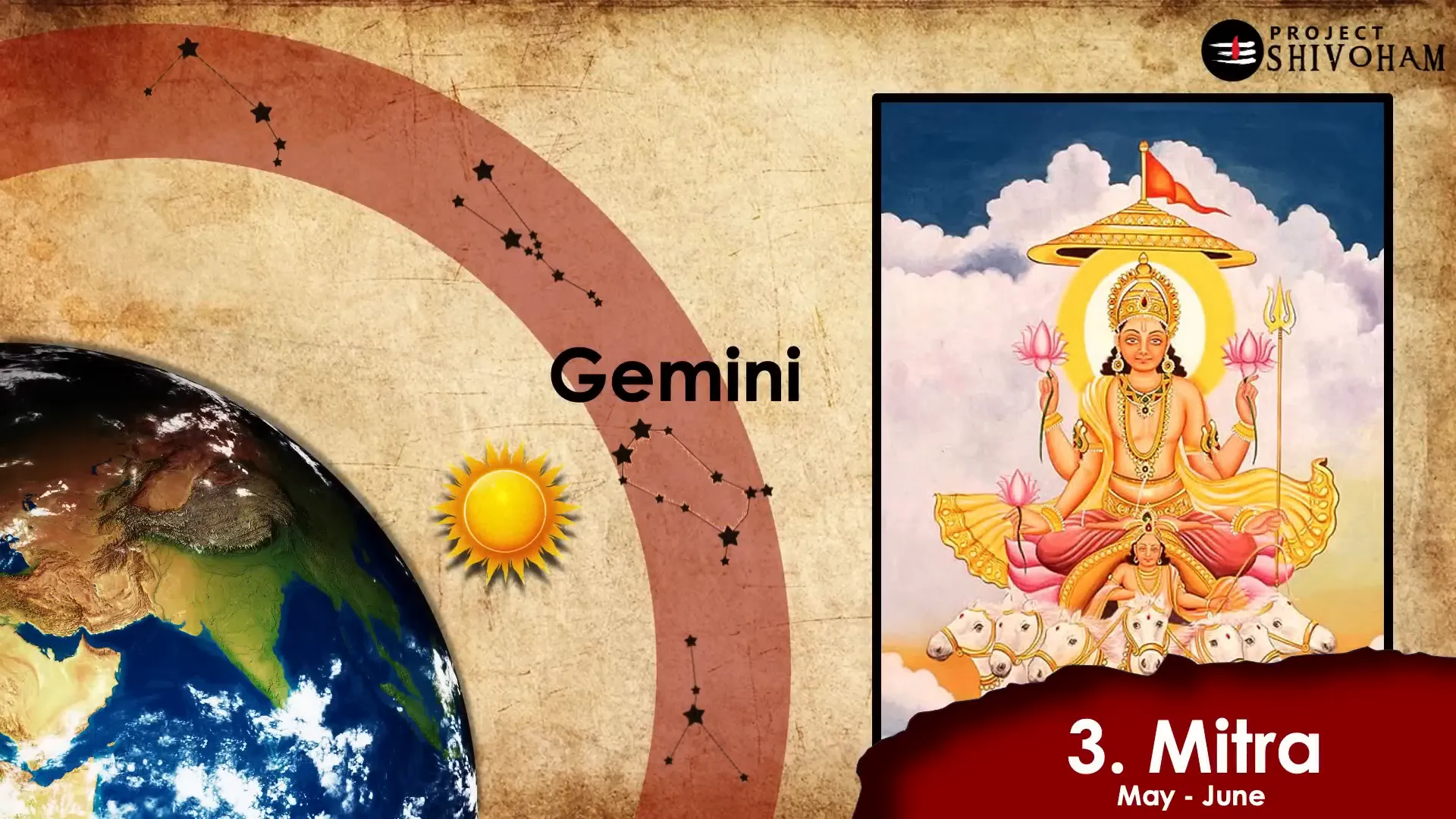
The Fourth Aditya: Varuna
Varuna, the fourth Aditya, is honored when the Sun is in the constellation Cancer from June to July. This period signifies emotional depth and the nurturing aspects of life.
Devotees turn to Varuna for guidance and protection, recognizing the importance of water and its life-giving properties. The reverence for Varuna embodies the essence of compassion and care in Bharatiya culture.
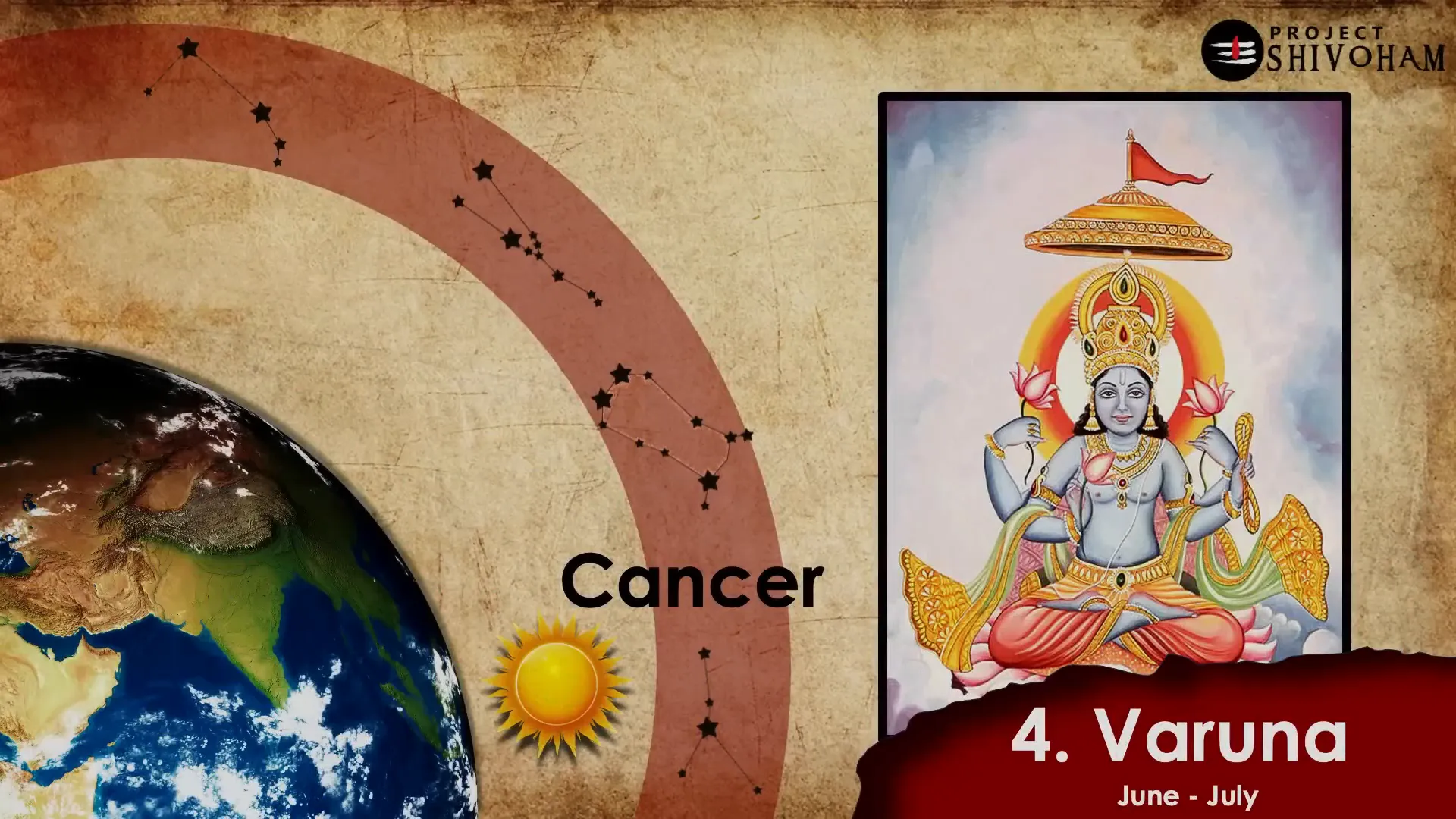
The Fifth Aditya: Indra
Indra, the fifth Aditya, is associated with the constellation Leo and is revered during the period from July to August. This time symbolizes strength and leadership, reflecting the qualities of Indra, who is often depicted as the king of the gods in Vedic mythology.
In this phase, devotees seek guidance and protection from Indra, recognizing his role as a rain god and the provider of nourishment. The worship of Indra is also linked to the cycles of nature, emphasizing the importance of harmony between humanity and the environment.
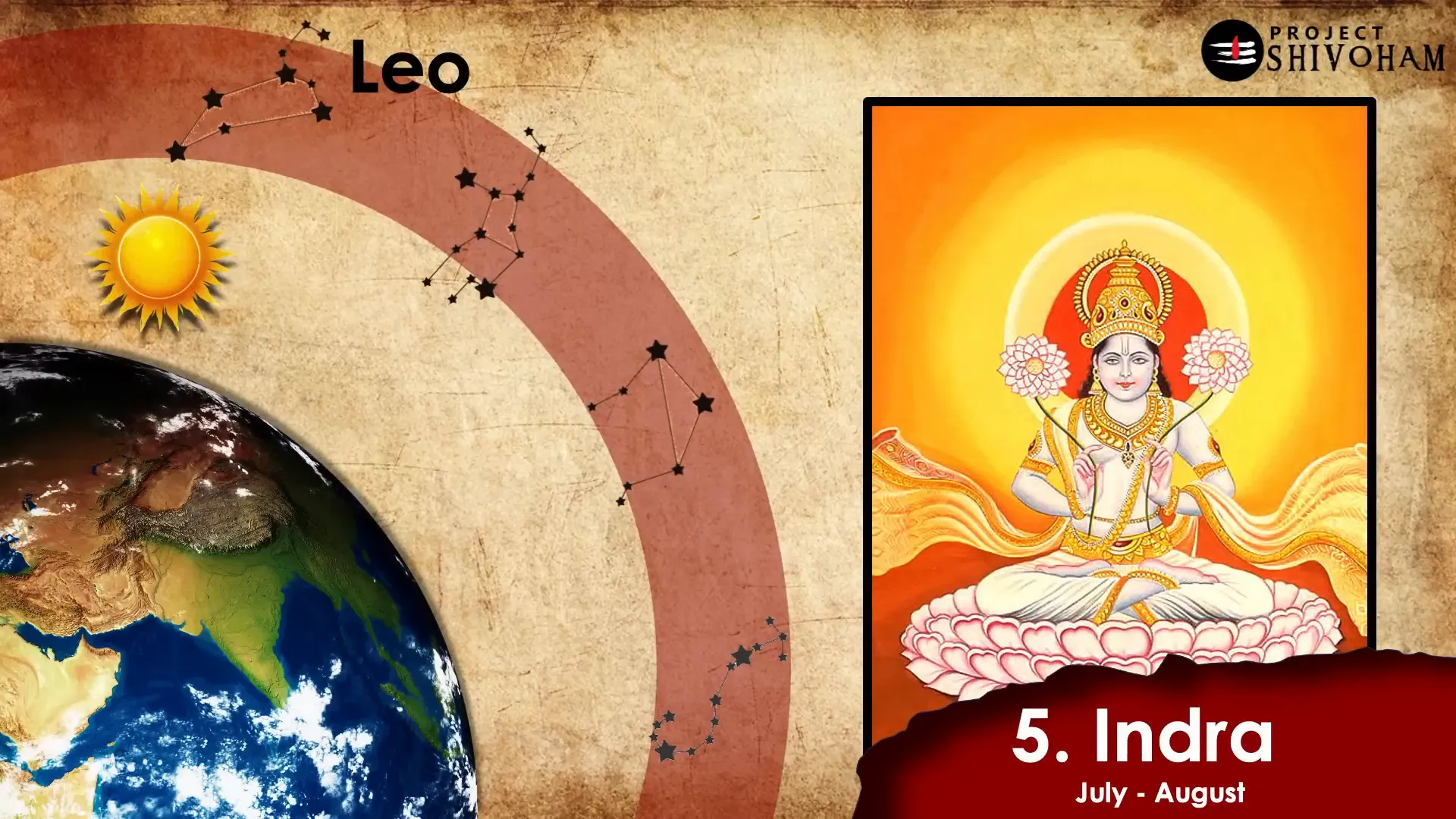
The Sixth Aditya: Vivasvan
Vivasvan, the sixth Aditya, emerges when the Sun is in the backdrop of the constellation Virgo, from August to September. This period is associated with knowledge and enlightenment, as Vivasvan is often regarded as a symbol of divine wisdom.
Worshipping Vivasvan encourages individuals to seek knowledge and understanding, fostering a desire for personal growth and enlightenment. The connection between Vivasvan and the harvest season highlights the importance of knowledge in agricultural practices and sustenance.
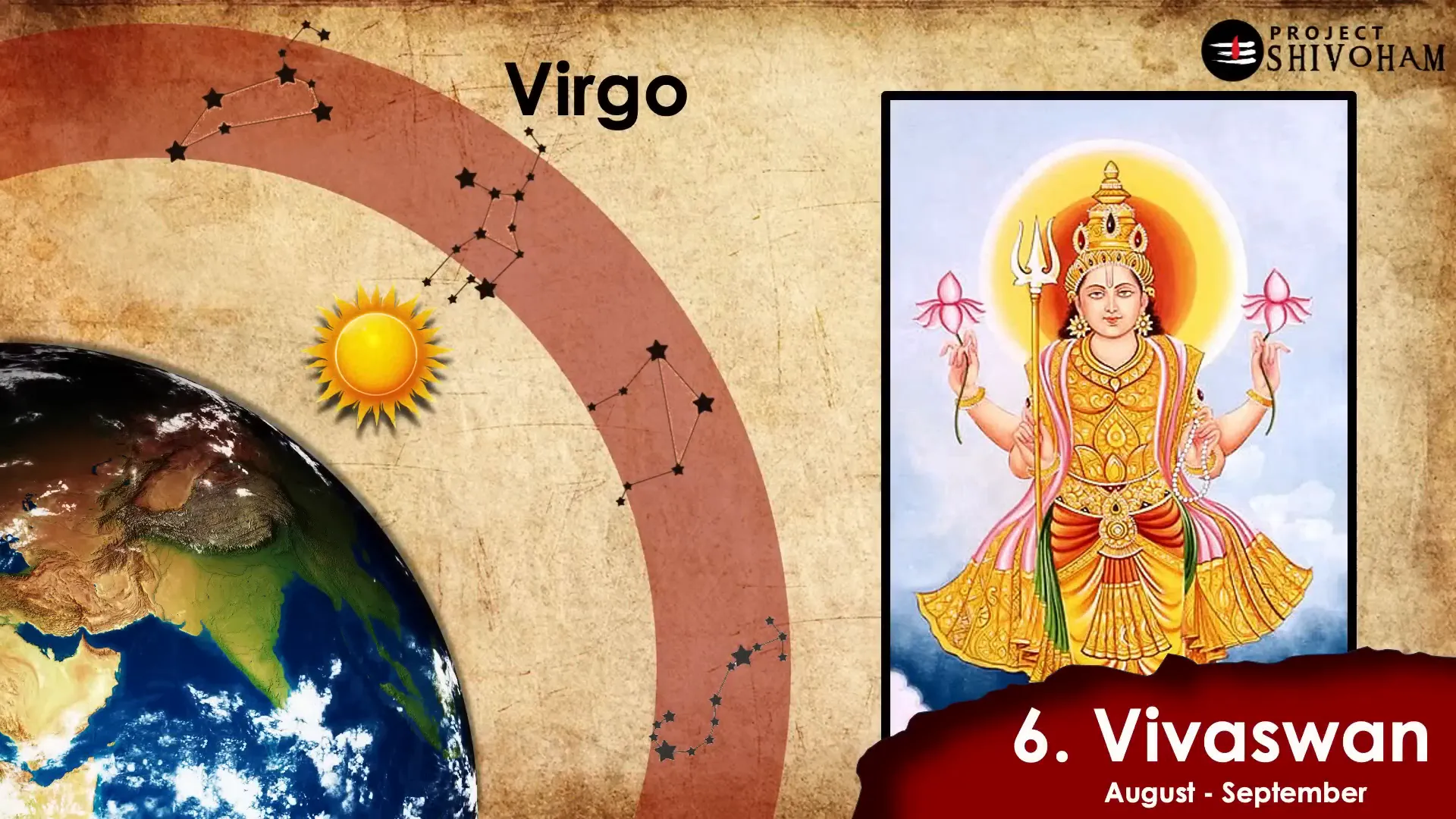
The Seventh Aditya: Trashta
Trashta, the seventh Aditya, is honored when the Sun traverses the constellation Libra from September to October. This time signifies balance and justice, reflecting Trashta’s role in maintaining equilibrium in the universe.
Devotees turn to Trashta for guidance in matters of fairness and harmony, recognizing the importance of interpersonal relationships. The worship of Trashta emphasizes the need for balance in all aspects of life, promoting peace and understanding among individuals.
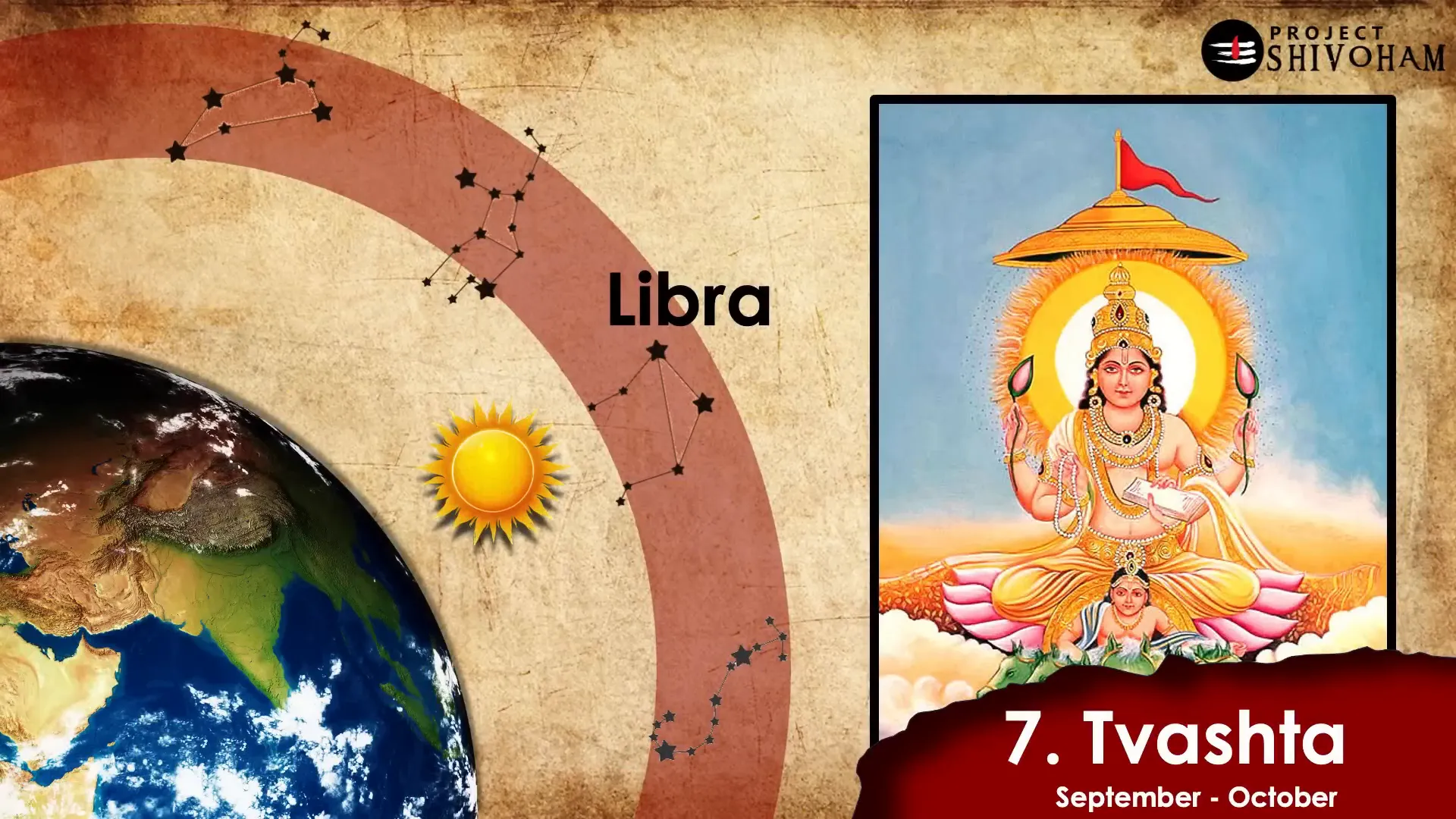
The Eighth Aditya: Vishnu
Vishnu, the eighth Aditya, is revered as the Sun enters the constellation Scorpio during the period of October to November. This phase represents transformation and renewal, embodying the qualities associated with Vishnu, the preserver and protector of the universe.
Worshipping Vishnu encourages individuals to embrace change and seek spiritual growth. The significance of this period highlights the cyclical nature of life, reminding devotees of the importance of adaptation and resilience in the face of challenges.
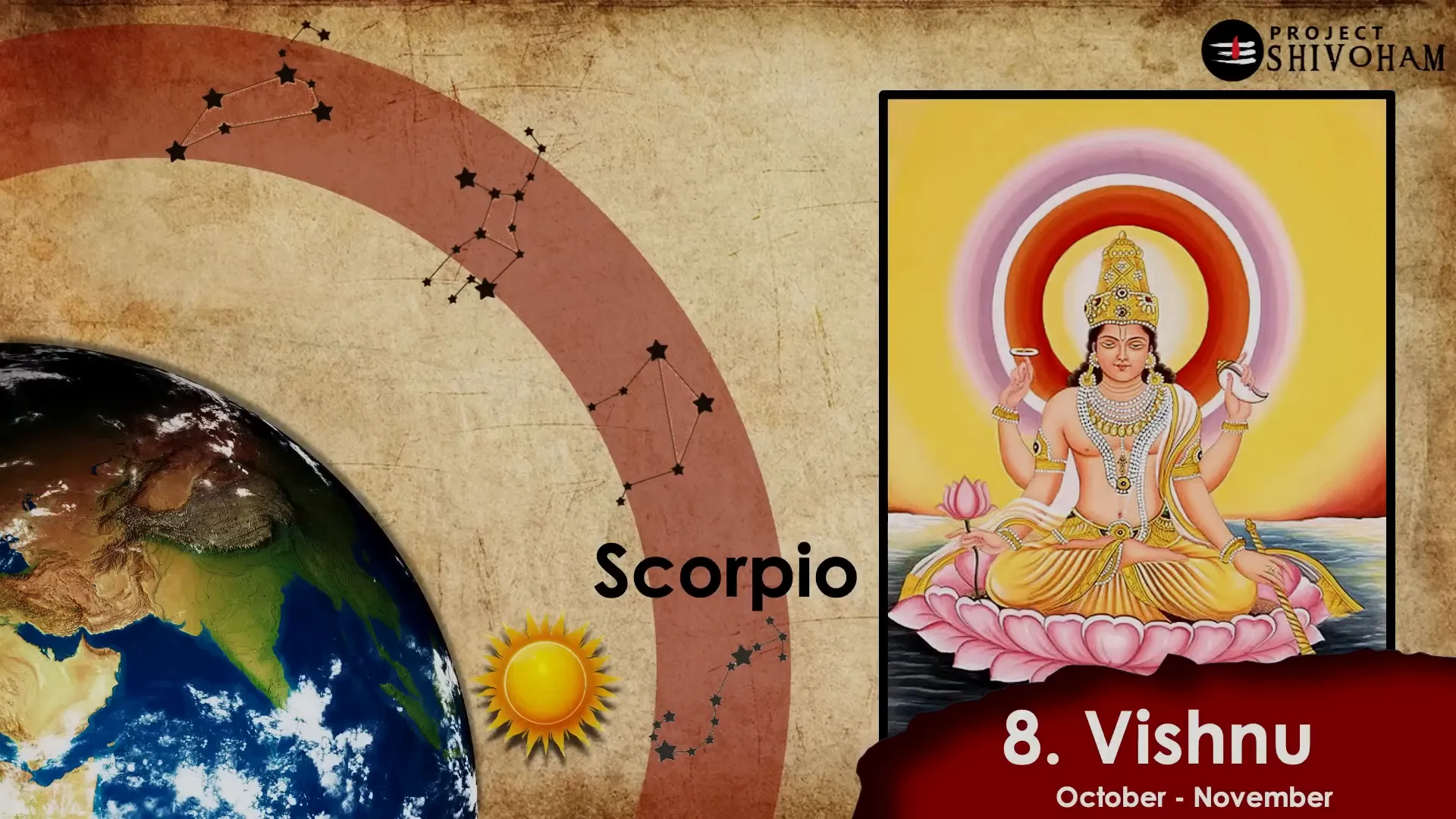
The Ninth Aditya: Amshuman
Amshuman, the ninth Aditya, shines when the Sun is in the backdrop of the constellation Sagittarius from November to December. This time symbolizes aspiration and ambition, reflecting Amshuman’s role as a guiding light in the pursuit of goals.
Devotees honor Amshuman to seek inspiration and motivation in their endeavors. The connection between Amshuman and the harvest season underscores the importance of hard work and dedication in achieving success.
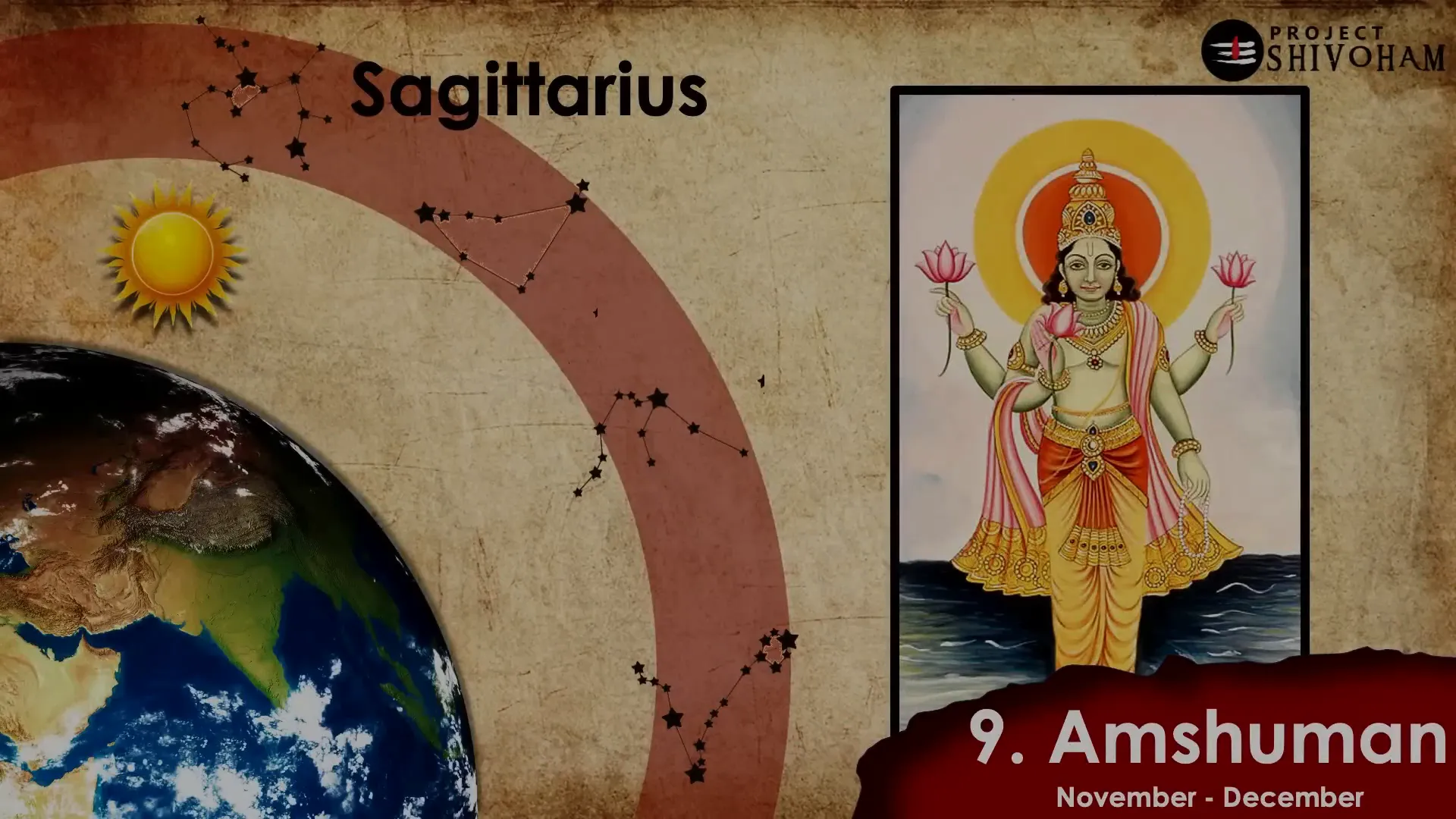
The Tenth Aditya: Bhaga
Bhaga, the tenth Aditya, is revered when the Sun is in the constellation Capricorn, during December to January. This period marks the winter solstice, a time of renewal and new beginnings. The worship of Bhaga emphasizes the importance of sharing and generosity, reflecting the spirit of community and togetherness.
Bhaga’s significance is particularly highlighted during Makara Sankranti, a festival that celebrates the Sun’s transition into Capricorn. This astronomical event is deeply intertwined with agricultural practices, symbolizing the end of winter and the beginning of longer days.
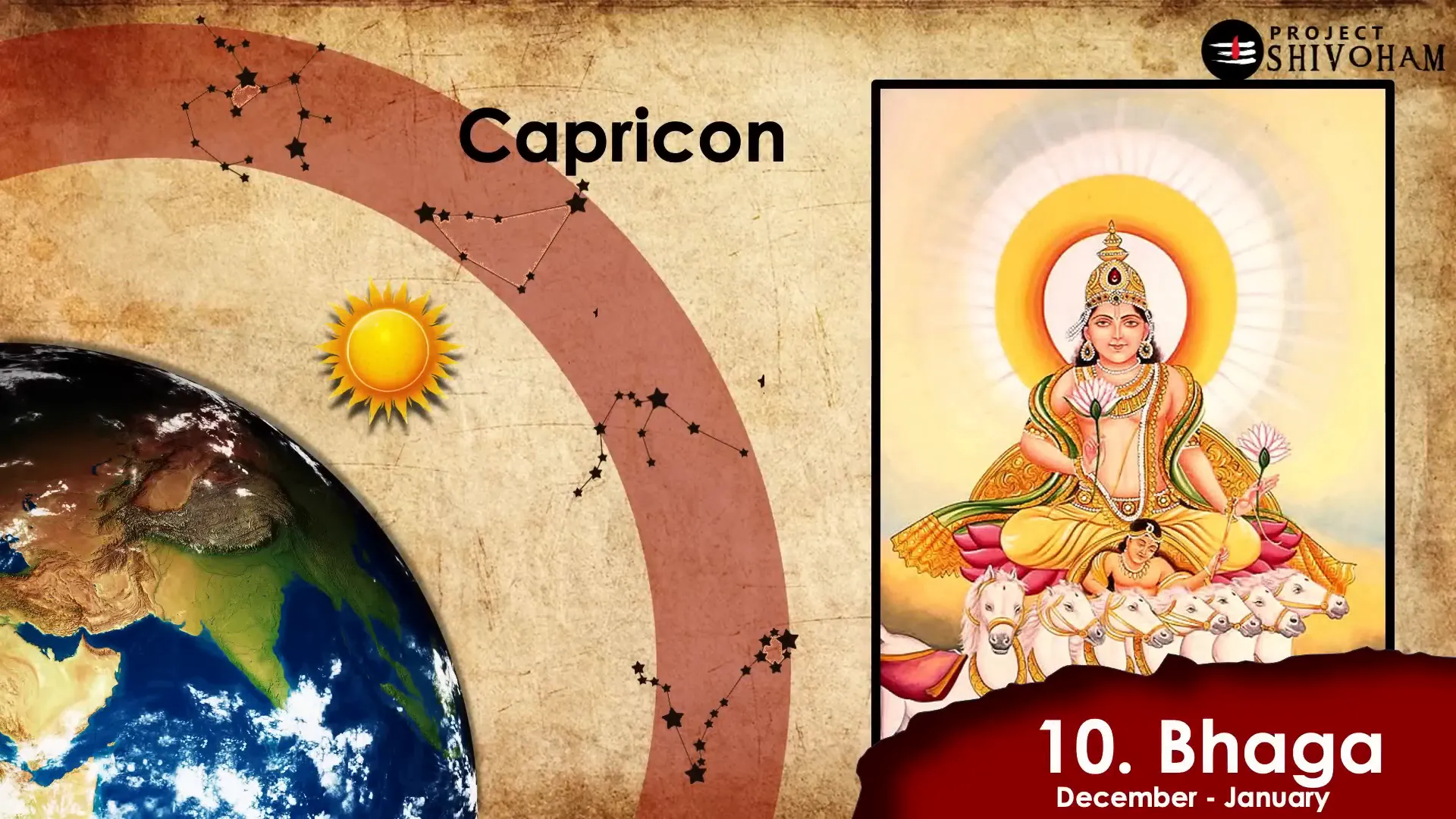
The Eleventh Aditya: Pusha
Pusha, the eleventh Aditya, is honored when the Sun is in the backdrop of the constellation Aquarius from January to February. This time represents nourishment and abundance, reflecting Pusha’s role as the giver of sustenance.
Worshipping Pusha encourages gratitude for the blessings of food and resources. The connection with agriculture underscores the importance of nurturing relationships with nature and the environment.
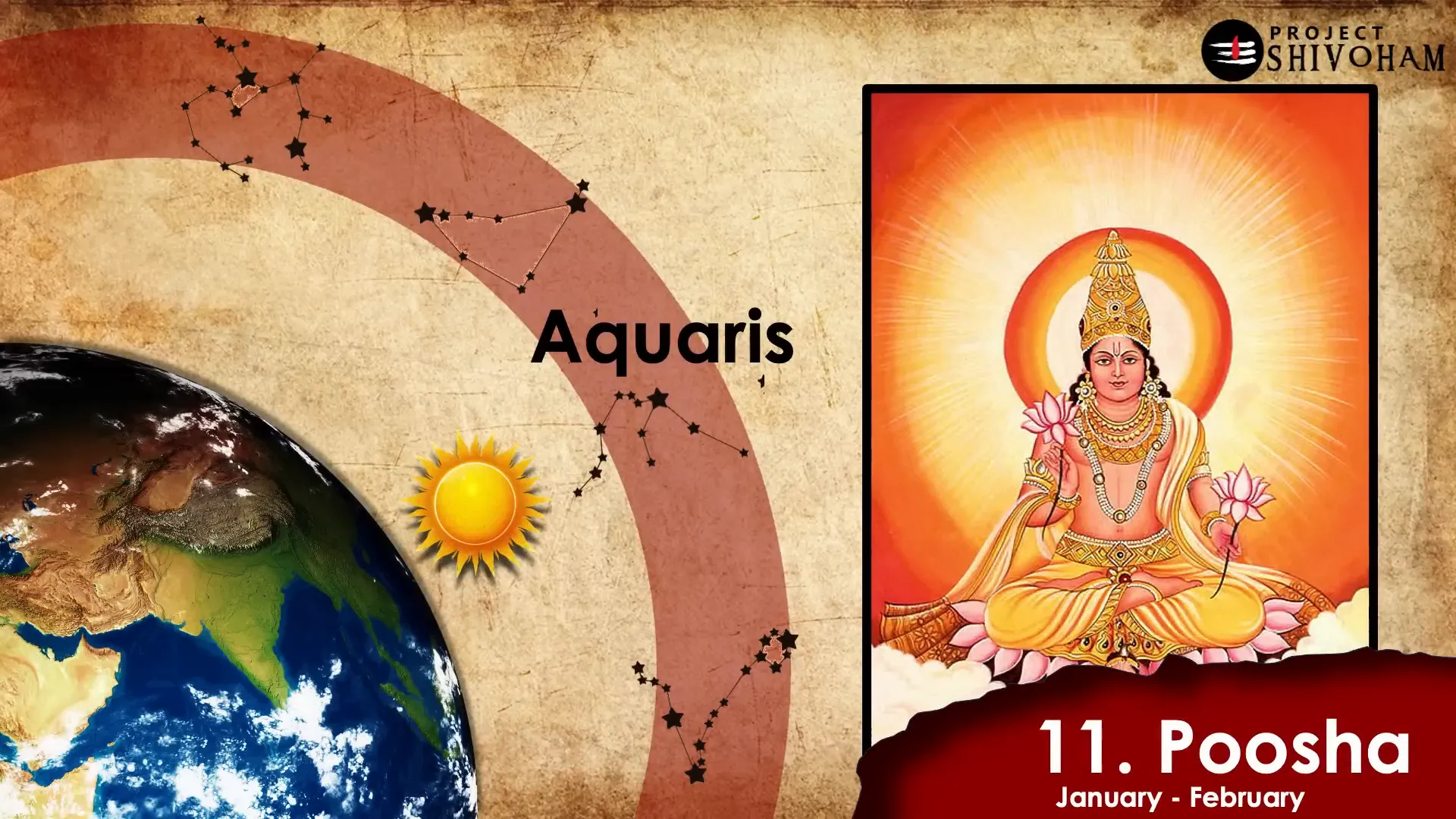
The Twelfth Aditya: Pajanya
Pajanya, the twelfth Aditya, is revered when the Sun traverses the constellation Pisces from February to March. This phase symbolizes the culmination of the yearly cycle, reflecting Pajanya’s connection with the waters and fertility.
Devotees honor Pajanya to seek abundance and prosperity in their lives. The worship of Pajanya highlights the significance of water in sustaining life and the interconnectedness of all living beings.
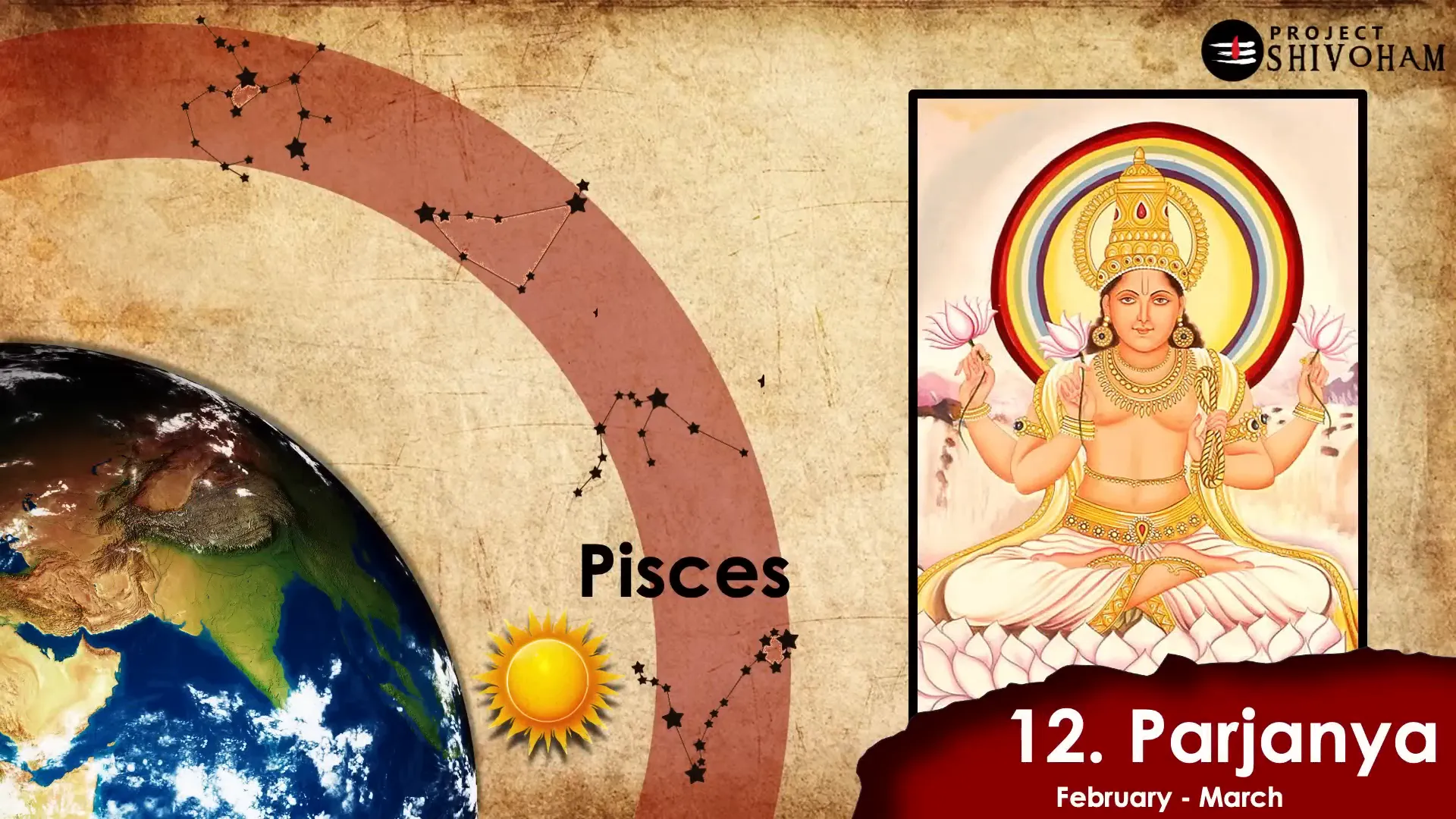
Scriptural References to Dwadasa Aditya
Throughout the vast landscape of Bharatiya scriptures, references to the Dwadasa Aditya are prevalent. Each scripture, from the Vedas to the Puranas, acknowledges the significance of these twelve manifestations of the Sun.
The Rigveda, one of the oldest texts, mentions the twelve positions of the Sun, emphasizing their importance in the cosmic order. The eighth mandala of the Rigveda explicitly references the Adityas, illustrating their divine qualities and the blessings they bestow upon humanity.
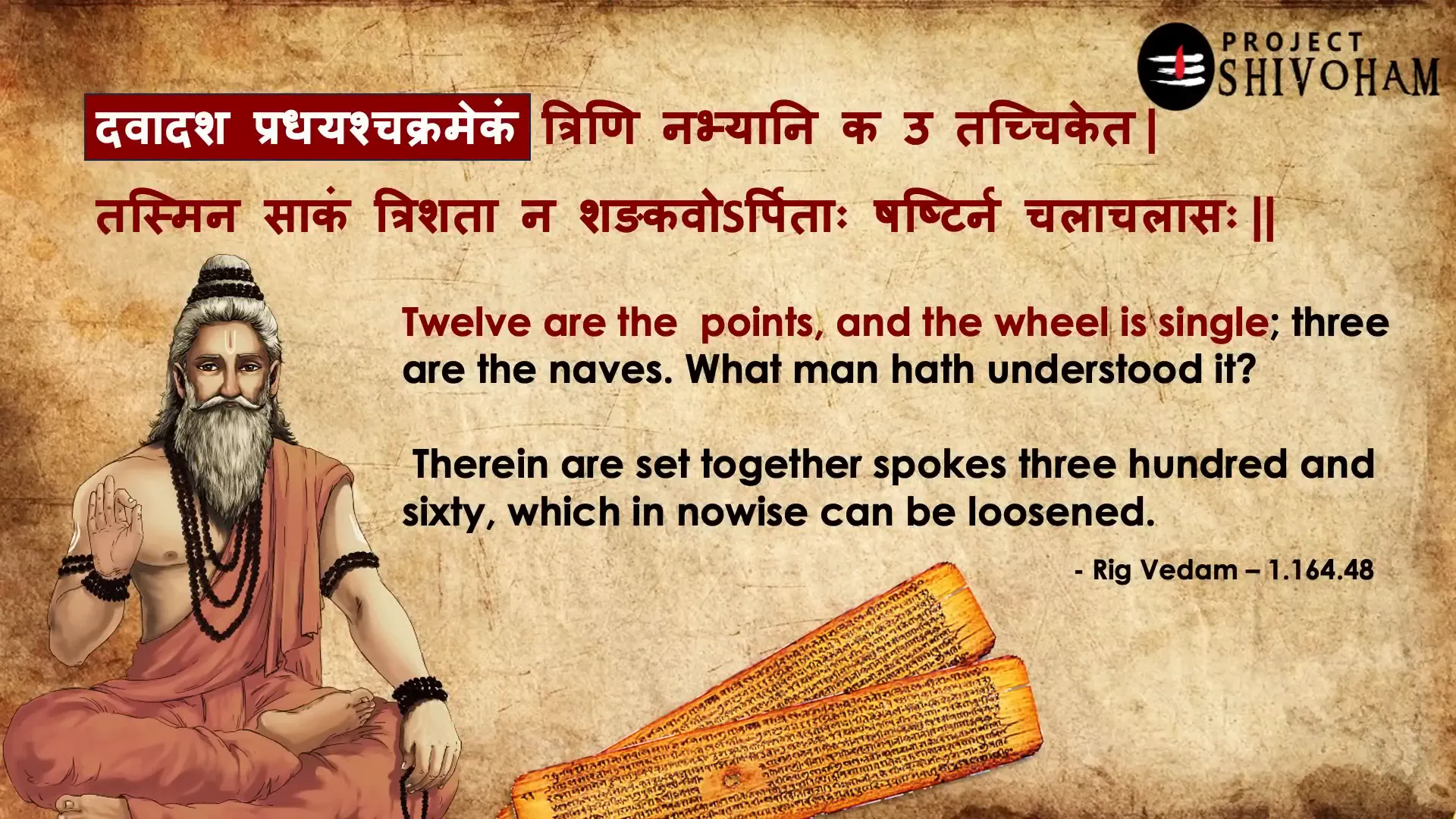
In the Itihasa, particularly in the Ramayana, the names of the Dwadasa Aditya are encoded within hymns that celebrate their virtues. These references serve as a reminder of the interconnectedness between celestial bodies and earthly existence.
The Surya Siddhanta, a foundational astronomical text, clearly articulates the significance of the twelve months and their alignment with the constellational positions of the Sun. This ancient treatise not only provides insights into time calculation but also reinforces the reverence for the Dwadasa Aditya in Bharatiya culture.
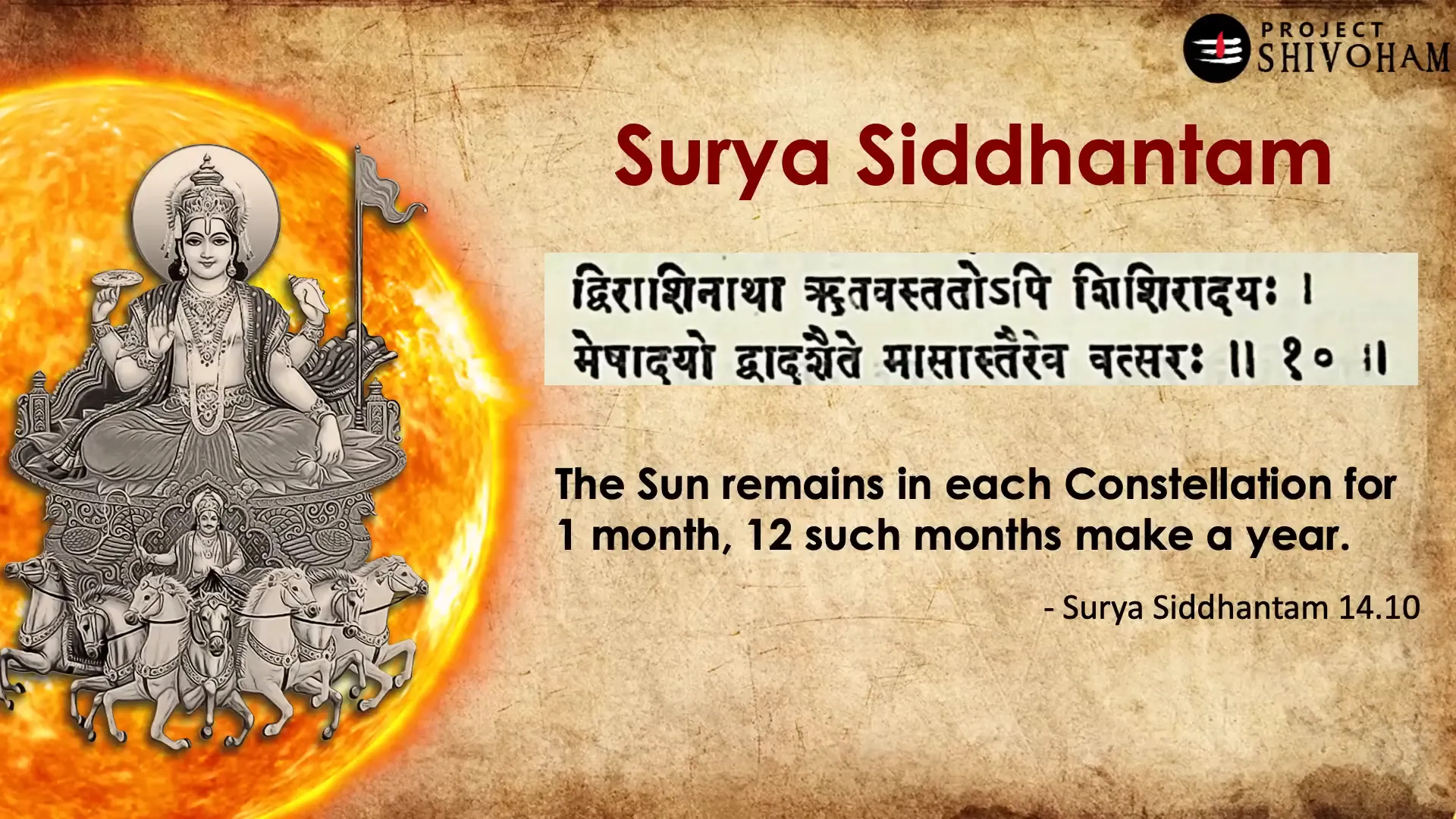
The legacy of the Dwadasa Aditya continues to manifest in various aspects of life, from rituals and festivals to daily practices. Their influence is felt in agricultural cycles, spiritual observances, and the very fabric of Bharatiya society.
Scientific Texts: Surya Siddhantam
The Surya Siddhantam stands as a monumental work in the realm of ancient Indian astronomy. This text, attributed to the sage Aryabhata, intricately details the movements of celestial bodies and their relationships with time.
It emphasizes the significance of the twelve months, aligning them with the twelve constellations that the Sun traverses throughout the year. Each month is not merely a division of time but is deeply connected to the cosmic order, reflecting the harmony of the universe.
Surya Siddhantam articulates how the Sun remains in each constellation for approximately one month, a concept that forms the foundation for the twelve-month calendar. This understanding is crucial for agricultural cycles, festivals, and spiritual observances in Bharatiya culture.
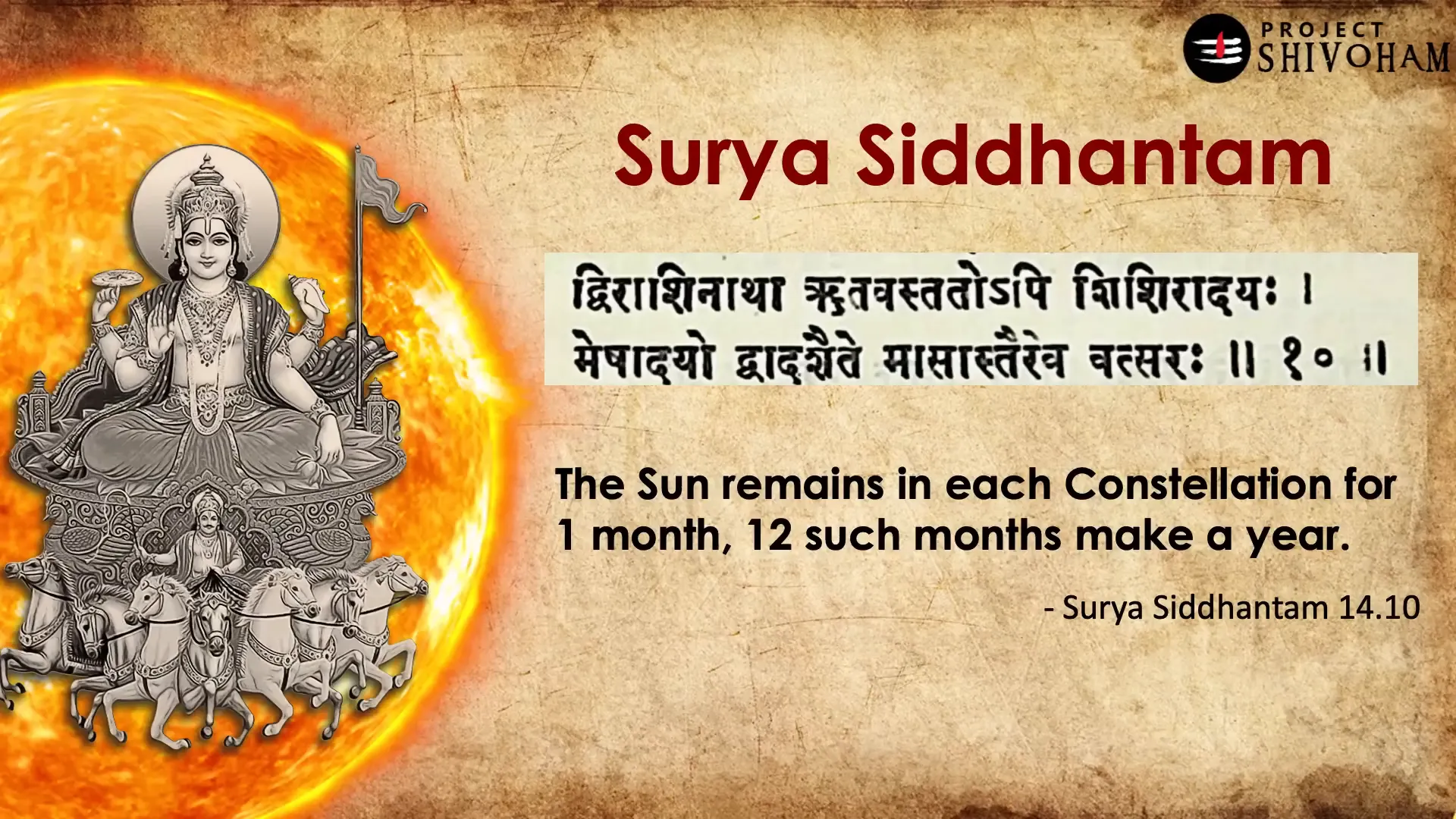
Physical Manifestations of Dwadasa Aditya
Across Bharat, the physical manifestations of the Dwadasa Aditya are celebrated in numerous temples, particularly in Varanasi. This city, known for its rich cultural heritage, has a long-standing tradition of worshipping each of the twelve Adityas in designated shrines.
These temples serve as a testament to the reverence for the Sun and its manifestations, where devotees engage in rituals that honor each form of Aditya. The imagery found in these temples, derived from Vishwakarma Shastra, holds profound significance, reflecting the unique attributes of each Aditya.
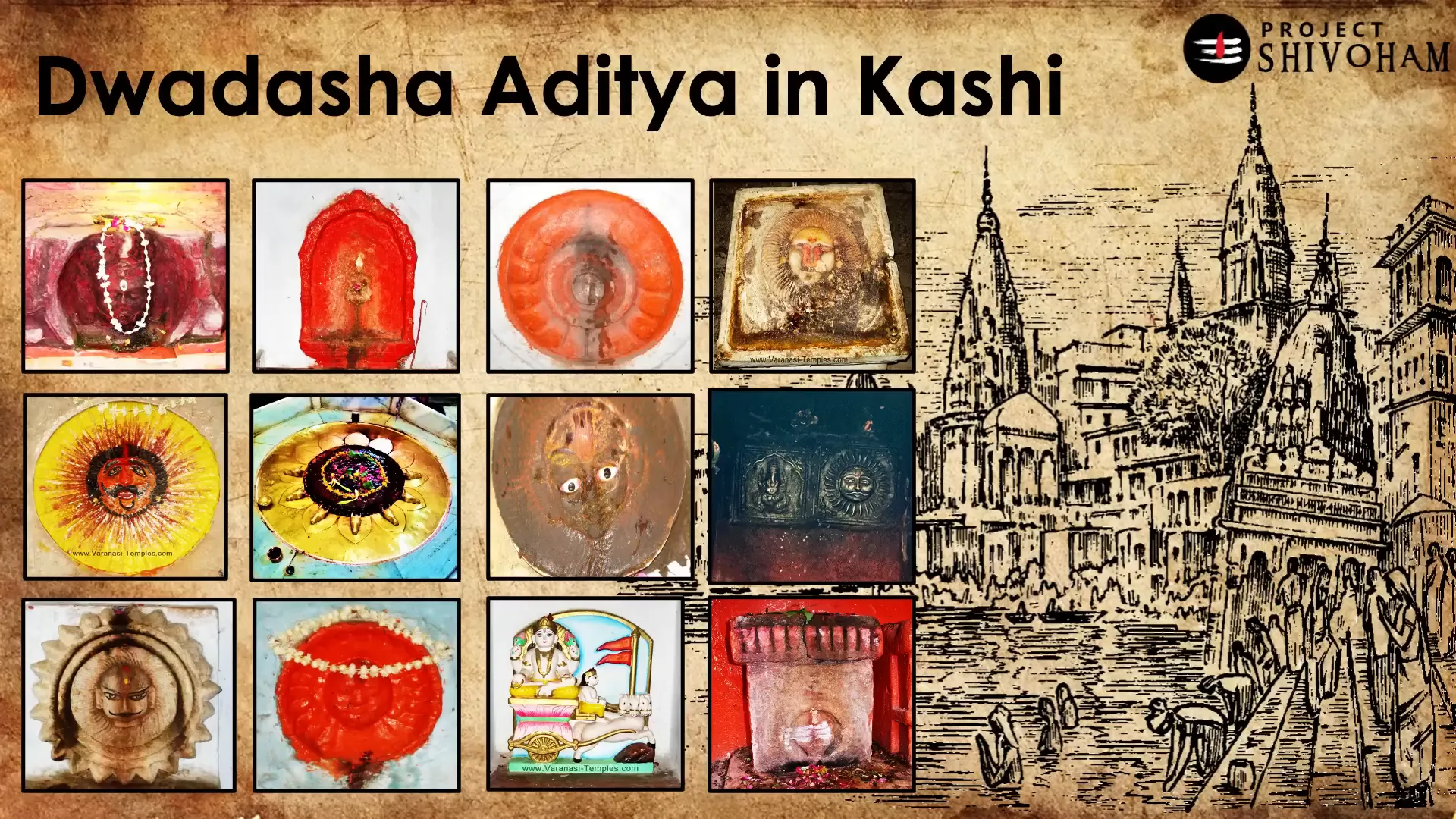
Physiological Aspects: Surya Namaskaram
Surya Namaskaram, or Sun Salutation, is a revered practice in yoga that embodies the essence of the Dwadasa Aditya. This series of twelve postures symbolizes respect towards the Sun and aligns with the twelve constellational positions of the Adityas.
Each posture in Surya Namaskaram corresponds to a specific Aditya, integrating physical movement with spiritual intent. This practice not only enhances physical well-being but also fosters a deeper connection to the cosmic energies represented by the Sun.

The Spiritual Practice of Sandhya Vandana
Sandhya Vandana is an essential spiritual practice in Bharatiya culture, aimed at invoking the blessings of the Sun. It is not limited to any particular caste or gender; rather, it is a practice meant for all, emphasizing the universality of devotion.
Performed three times a day—at sunrise, noon, and sunset—Sandhya Vandana serves as a reminder to seek enlightenment and clarity through the energy of the Sun. It intertwines with the philosophy of the Dwadasa Aditya, reinforcing the importance of the Sun in daily life and spirituality.
Legacy of Aditya in Modern India
The legacy of the Dwadasa Aditya extends into contemporary India, evident in various domains. The recent naming of the ISRO solar probe, Aditya L1, symbolizes the continued reverence for the Sun and the scientific pursuit of knowledge regarding solar phenomena.
This legacy is also reflected in cultural festivals, agricultural practices, and spiritual observances that honor the cycles of the Sun. The awareness and appreciation of the Dwadasa Aditya are crucial in fostering a deeper understanding of Bharatiya culture and its connection to the cosmos.
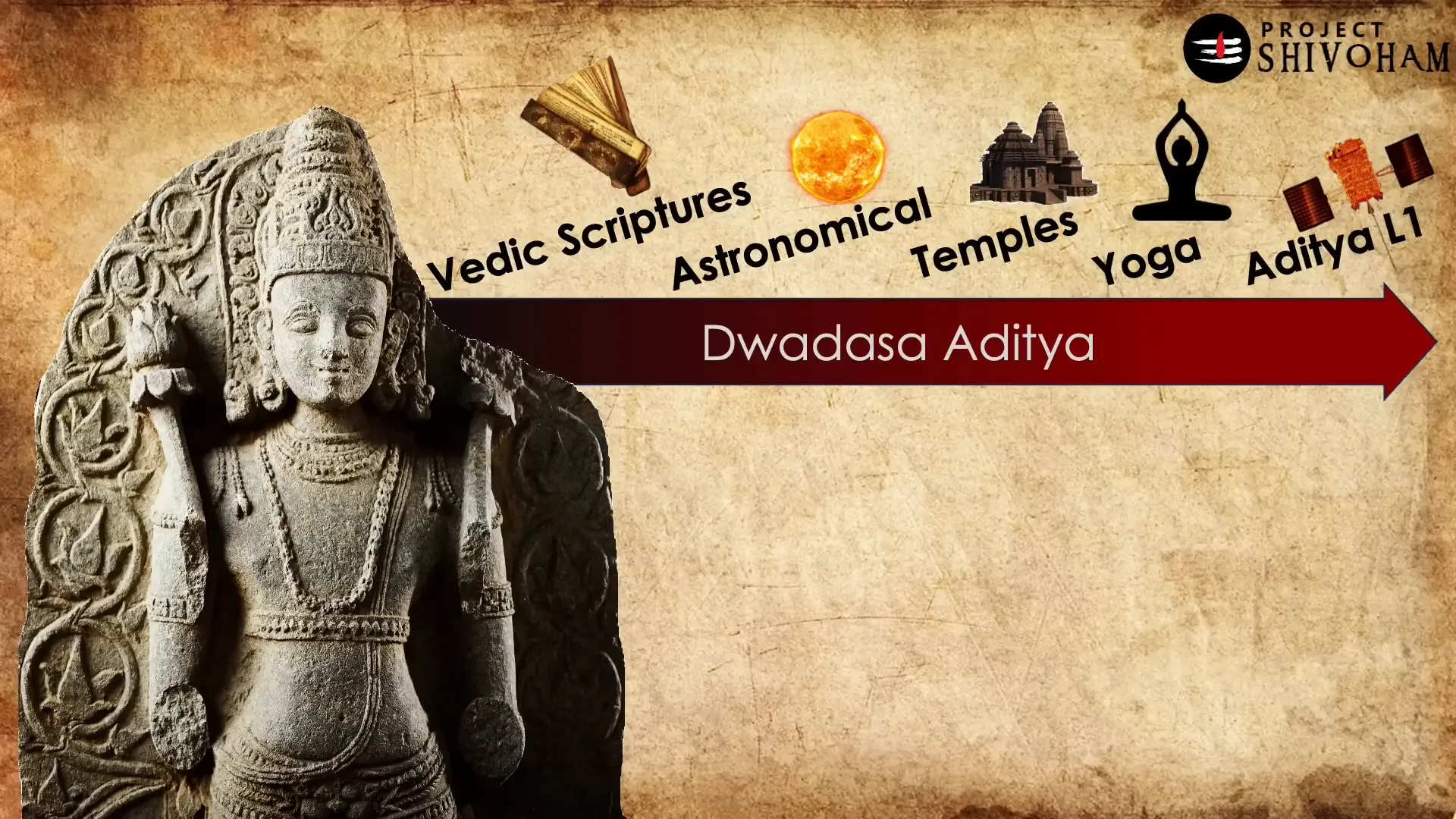
The Truth of Satyameva Jayate
The phrase ‘Satyameva Jayate,’ meaning ‘Truth alone triumphs,’ resonates profoundly with the legacy of the Dwadasa Aditya. Despite historical attempts to suppress this truth, the reverence for the Sun and its manifestations persists undeterred.
Instances of destruction of temples dedicated to the Adityas have not extinguished their significance. Instead, the enduring legacy of the Adityas continues to inspire devotion and respect, reinforcing the idea that truth, much like the Sun, cannot be hidden or diminished.
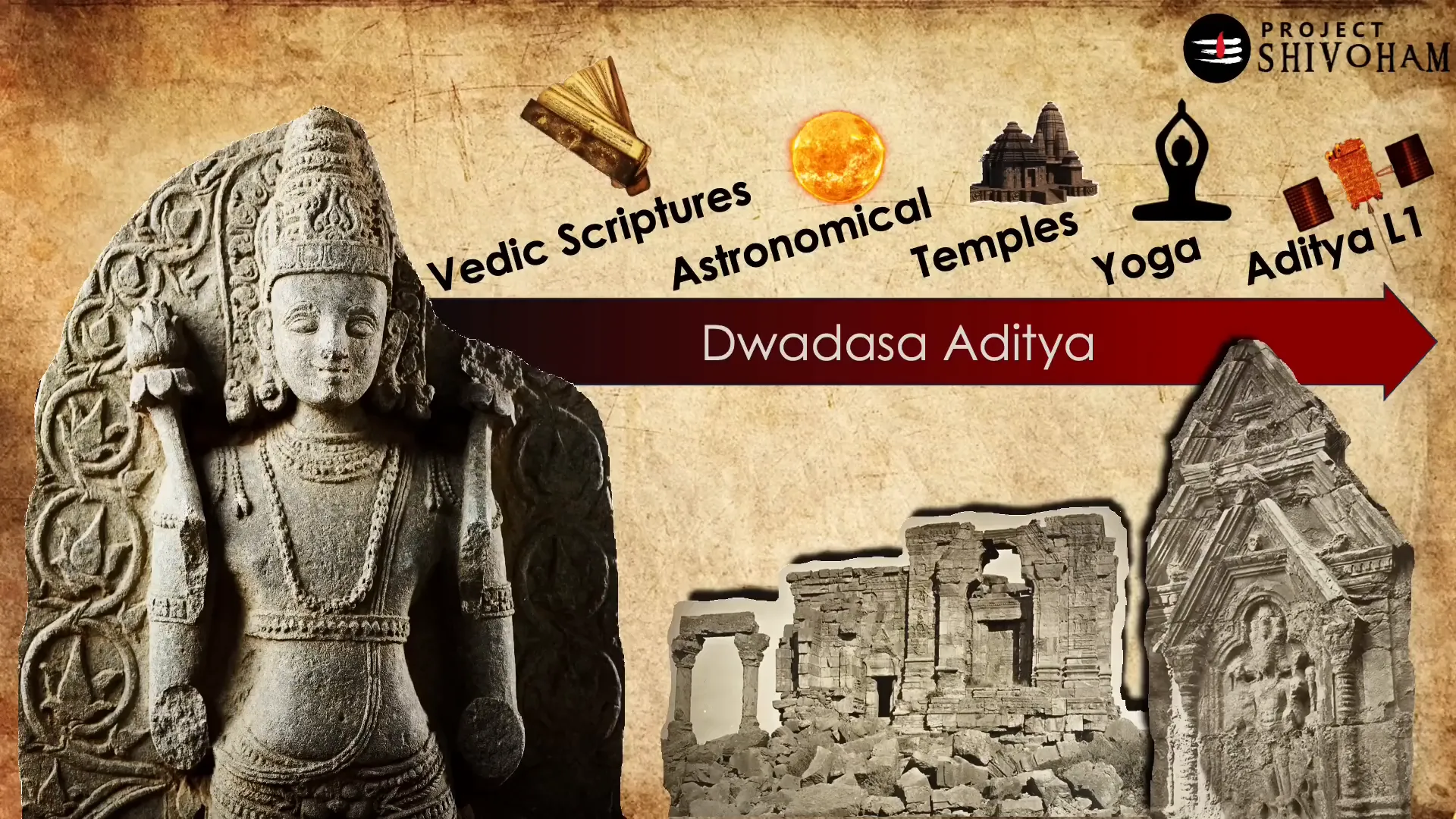
Conclusion: The Enduring Significance of Dwadasa Aditya
The Dwadasa Aditya embody a rich tapestry of spiritual, astronomical, and cultural significance in Bharatiya society. From ancient texts like the Surya Siddhantam to modern scientific endeavors, their influence is pervasive and profound.
As we explore the depths of this legacy, it becomes clear that the reverence for the Adityas is not merely a relic of the past but a vibrant part of contemporary life. Understanding their significance can enhance our appreciation for the cosmos and our connection to the natural world.
Frequently Asked Questions
- What are the Dwadasa Adityas? They are the twelve manifestations of the Sun, each associated with a specific month and constellation in Bharatiya culture.
- How does Surya Namaskaram relate to the Dwadasa Adityas? Each pose in Surya Namaskaram corresponds to one of the twelve Adityas, symbolizing respect and connection to the Sun.
- What is the significance of Sandhya Vandana? It is a daily spiritual practice aimed at invoking the blessings of the Sun, performed at three specific times each day.
- How is the legacy of Aditya reflected in modern India? Through cultural practices, festivals, and scientific endeavors like the ISRO solar probe named Aditya L1.
- What does ‘Satyameva Jayate’ signify? It signifies the triumph of truth, emphasizing that despite attempts to suppress it, the reverence for the Dwadasa Aditya remains strong.
This article was created from the video The Ancient History Of 12 Adityas with the help of AI. Thanks to Aravind Markandeya, Project Shivoham.